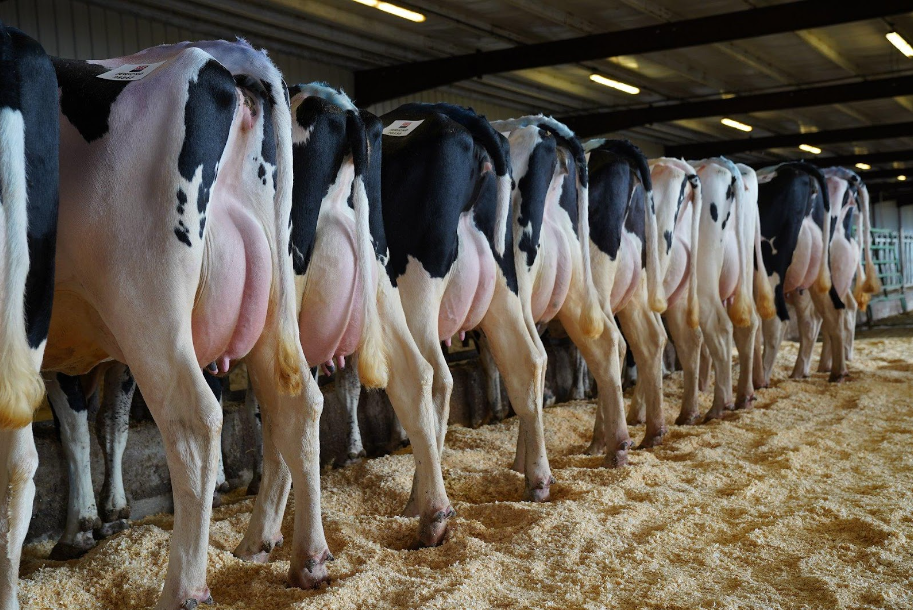Dairy cows are ailing with a multiplicity of health and production issues caused by excessive demands of contemporary agricultural systems. Immune depression, oxidative stress, reproductive disturbances, and diminished milk quality are some of the most prevalent issues affecting herd health as well as farm profitability.
Among the natural compounds that have been researched for application in animal feed is astaxanthin. Regarded as one of nature's most powerful antioxidants, astaxanthin is a carotenoid pigment produced by the microalga Haematococcus pluvialis. It is the pigment that colors salmon red-orange, shrimp red-orange, and krill red-orange, and is gaining greater prominence as an application to animal health as well.
This article outlines how cow milk quality, fertility, and immunity can be improved through astaxanthin supplementation, in consideration of animal well-being and optimal dairy production.

Understanding Oxidative Stress in Dairy Cows
Dairy cows are especially susceptible to oxidative stress by reasons such as:
- High metabolic stresses during lactation.
- Heat stress exposure.
- Dietary imbalance.
- Exposure to pathogens in the environment.
Oxidative stress is induced by a disruption in the free radicals and the body's antioxidant defense system. Oxidative stress weakens cells, inhibits immunity, damages fertility, and lowers milk quality. Astaxanthin, with higher free radical scavenging activity, restores balance and maintains cellular health.

1. Astaxanthin and Cow Immunity
Enhancing Natural Defenses
Subdued immunized cows are prone to mastitis, respiratory tract infections, and metabolic disease. Astaxanthin stimulates immune function by:
- Increasing the activity of white blood cells such as macrophages and natural killer cells.
- Suppressing inflammation that compromises immune function.
- Giving immune cell protection from oxidative destruction.
Practical Applications:
- Reduced incidence of mastitis.
- Improved resistance to infection by pathogens.
- Reduced veterinarian expenses.
Scientific Evidence
A study by Park et al. (2010) demonstrated that astaxanthin supplementation enhanced immune responses in animals through increased antibody production and reduced oxidative stress. The findings present an immediate application for maintaining healthier dairy herds.

Astaxanthin and Cow Fertility
Reproductive Health Challenges
Reproductive efficiency is arguably one of the most crucial aspects of dairy farming. Cows are likely to experience fertility challenges due to:
Heat stress.
- Nutrient deficiencies.
- Postpartum inflammation.
These are factors for delayed conception, lowered pregnancy rates, and raised culling.
Astaxanthin's Means of Assistance
Astaxanthin assists in enhancing fertility in cows through:
- Mitigating oxidative stress within uterine and ovarian tissues.
- Enhancing egg quality and survival of the embryo.
- Assisting in maintaining hormonal balance required for reproductive cycles.
Scientific Insights
Animal and human research has shown that astaxanthin enhances sperm quality, ovarian function, and reproductive performance by safeguarding reproductive cells against oxidative stress (Comhaire & Garem, 2006). The same holds in cattle, resulting in better conception rates and prevention of early embryonic loss.

Astaxanthin and Milk Quality
Protecting Milk Components
Milk quality depends to a great extent on protein integrity, fats, and immune factors integrity. Oxidative stress deteriorates milk nutrients, decreases shelf life, and results in off-flavor.
Astaxanthin enhances milk quality in the following ways:
- Simulates integrity of milk fats from lipid peroxidation (rancidity).
- Is included in content of natural antioxidants in milk.
- Simulates mammary gland integrity, keeps low somatic cell counts (SCC).

Increases Nutritional Value
Cow milk enriched with natural antioxidants such as astaxanthin is more valuable in precious compounds and may contain:
- Increased vitamins and carotenoids.
- Better oxidative stability.
- Possible health effects on the consumer.
Use in Mastitis Control
By mitigating oxidative stress and inflammation within the mammary gland, astaxanthin is likely to lower mastitis risk and severity, a key driver of milk quality and quantity.

Dosage and Supplementation in Dairy Nutrition
Astaxanthin may be provided to cows by:
- Algal-derived powders.
- Krill meal.
- Antioxidant-specific feed additives.
Suggested Dosage:
- Cattle research indicates 50–100 mg astaxanthin per cow per day, adjusted according to body weight and production stage.
Best Practices:
- Concomitant administration with other antioxidants (vitamin E, selenium) for synergism.
- Sustained addition to diet to optimize bioavailability.
- Use during critical times such as transition, early lactation, and heat stress seasons.

Safety of Astaxanthin in Cows
Astaxanthin has been found to be safe and well tolerated in dairy cows when used in appropriate doses. In contrast to synthetic antioxidants, it does not accumulate to toxic levels in body tissues. The European Food Safety Authority (EFSA, 2014) has affirmed its safety for use in animal feed.

Economic Benefit for Farmers
Improved cow health and productivity allow astaxanthin supplementation to offer straightforward dollar benefits:
- Reduced veterinary procedures.
- Higher rates of fertility, thus lowering insemination costs.
- Better longer-life higher-quality milk.
- Improved overall herd productivity.

Conclusion
Astaxanthin is the strongest among natural antioxidants and gives dairy cows a common welfare. By the strengthening of immunity, it minimizes the risk of disease and strengthens resistance to stress. Through the protection of fertility, it retains reproductive efficiency and productivity of herd. And through the protection of milk against oxidative damage, it improves milk quality, to the benefit of farmers as well as consumers.
With the dairy production industry seeking sustainable, natural methods of enhancing yields, astaxanthin ranks as an excellent feed additive. By virtue of already established antioxidant, anti-inflammatory, and health-enhancing capabilities, it becomes a central figure in livestock nutrition today.
References
Comhaire, F. H., & Garem, Y. E. (2006). The role of food supplements in the treatment of male infertility. Therapeutic Advances in Urology, 9(4), 229–241.
EFSA Panel on Additives and Products or Substances used in Animal Feed (FEEDAP). (2014). Scientific opinion on the safety and efficacy of astaxanthin for animals. EFSA Journal, 12(6), 3724.
Hussein, G., Sankawa, U., Goto, H., Matsumoto, K., & Watanabe, H. (2006). Astaxanthin, a carotenoid with potential in human health and nutrition. Journal of Natural Products, 69(3), 443–449.
Park, J. S., Chyun, J. H., Kim, Y. K., Line, L. L., & Chew, B. P. (2010). Astaxanthin reduced oxidative stress and strengthened immune response in animals. Nutrition & Metabolism, 7(1), 18.










